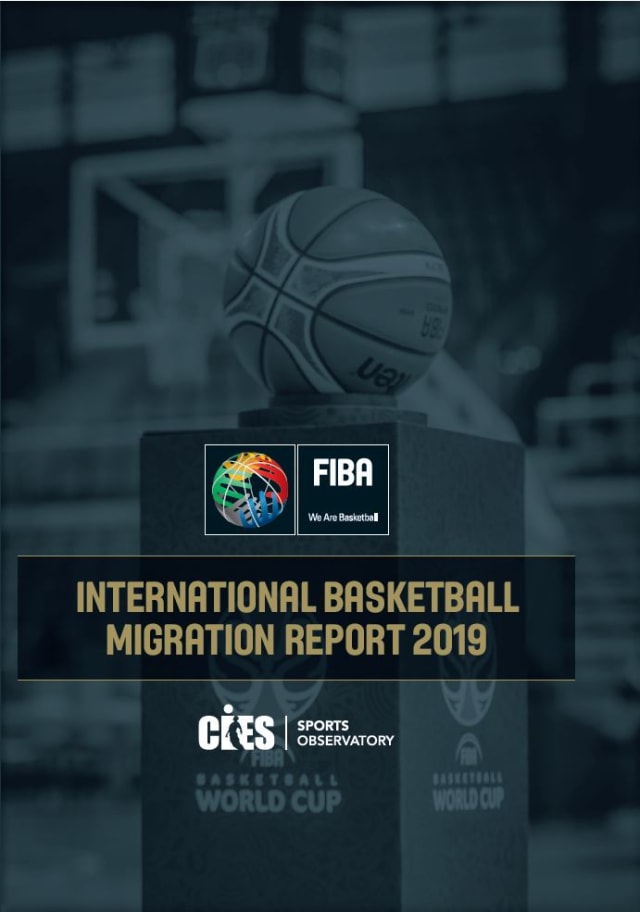2019 edition of International Basketball Migration Report sees international transfers stabilize
NEUCHATEL/MIES (Switzerland) - CIES and FIBA have published the eighth edition of the International Basketball Migration Report, a seasonal insight into the migratory trends and tendencies of the sport.
NEUCHATEL/MIES (Switzerland) - The International Centre for Sports Studies (CIES) and FIBA have published the eighth edition of the International Basketball Migration Report, a seasonal insight into the migratory trends and tendencies of the sport across the globe.
This edition of the report, which covers the 2018-19 basketball season, combines FIBA’s knowledge and data on international transfers with the CIES Sports Observatory’s renowned expertise in analysis to document the international migration of players for this season.
The FIBA Management and Administrative Platform (MAP), FIBA’s central information system used to manage all aspects of FIBA basketball competitions, has been a revolutionary tool in regards to the transferring and registering of players and agents. Now with a central online registration system for agents alongside a controlled and centralized players list, the ability of FIBA to monitor all international transfers has been greatly enhanced.
With a total of 8,690 transfers recorded for the season involving 6,882 players, this edition truly emphasizes how basketball is a global sport, encapsulated by 213 National Federations and millions of registered players around the world.
Some of the main highlights from this year's findings are:
Stabilization in the number of international transfers
More than 8,600 international transfers were registered with FIBA over the past three basketball seasons – albeit a decrease of 6% in comparison with the 2016-17 season. The number of players involved in transfers was similar to the 2017-18 season.
Stabilization in the number of International Players in the NBA
There has been a small increase in the number of International Players. More International Players have been selected during the 2018 NBA Draft (both first and second round). The major change is that 11 out of the 14 selected players have entered in the NBA following their draft.
High number of foreign players and increase of different nationalities within national leagues
The level of foreign players within national leagues and the diversity of nationalities remains high. Six out of 16 leagues have more foreign than national players. Spain remains the league with the highest percentage of foreign players and the highest number of nationalities.
Limited development opportunities within leagues for National U21 players
Nine out of 16 leagues have increased their number of National U21 players. There has been an encouraging increase for countries like Argentina, which went from 25.1% to 30.7%, however, the figure across all national leagues average remains low with 14.8%.
Click here to download the full report.
###
About FIBA
FIBA (fiba.basketball) - the world governing body for basketball, is an independent association formed by 213 National Basketball Federations throughout the world. It is recognized as the sole competent authority in basketball by the International Olympic Committee (IOC).
For further information about FIBA, visit fiba.basketball or follow FIBA on facebook.com/fiba, twitter.com/fiba, instagram.com/fiba and youtube.com/fiba.
CIES - The International Centre for Sports Studies
Creating an impact on the way sport is managed worldwide
The International Centre for Sport Studies (CIES) is an independent study centre located in Neuchâtel, Switzerland. It was created as a foundation in 1995 by the Fédération Internationale de Football Association (FIFA), the University of Neuchâtel and the City and State of Neuchâtel.
Using a multi-disciplinary approach (law, sociology, geography, history and management), CIES provides research, top-level education and consulting services to the world of sport. For further information visit cies.ch.
